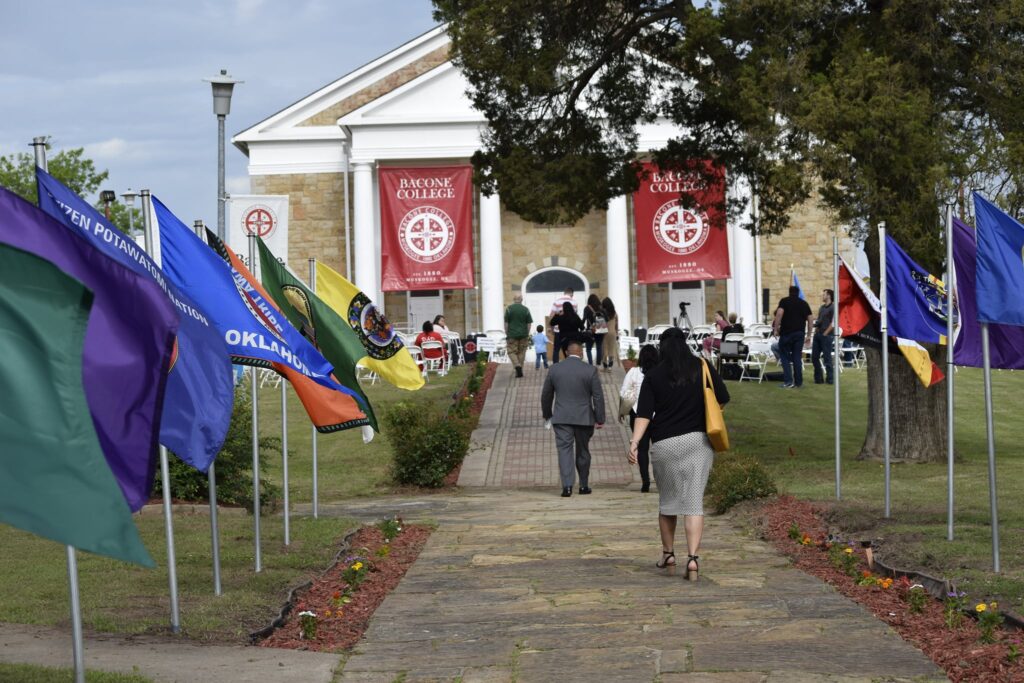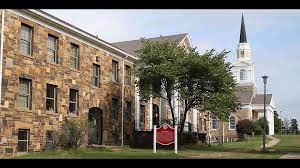Legacy and Background
Bacone College was originally founded in 1880 (some sources note 1881) by missionary teacher Almon C. In the Cherokee area, Bacone was first known as “Indian University” before relocating to Muskogee, Oklahoma. It had a rich history connected to Native American education and culture as Oklahoma’s longest continually running university. For generations, the college served as a bridge between Native traditions and liberal arts education, shaping countless students’ academic and cultural identities. Over the decades, Bacone became widely recognized for its commitment to Native students and the arts. Its renowned art program gave rise to the distinctive “Bacone style” of Native American art, influencing a national movement in Indigenous visual expression.
Years of Decline
Bacone College’s financial decline became increasingly visible in 2018, when mounting debts forced the institution into drastic measures. Layoffs swept across faculty and staff, athletic programs were suspended, and assets such as Bacone Commons were sold in a desperate attempt to stabilize operations. These moves, however, were not enough to reverse the downward spiral. In an effort to secure long-term survival, Bacone pursued a transition to tribal college status, seeking recognition and support from the Bureau of Indian Affairs. Unfortunately, the plan faltered when federal approval did not come through, leaving the college without the institutional backing it had hoped for. By spring 2024, the situation had worsened beyond repair.

Bankruptcy & Liquidation
- In June 2024, Bacone College took the risky decision to declare Chapter 11 bankruptcy in an attempt to reorganize its finances and locate a potential partner to assist. it restarts operation This filing, however, immediately disqualified the institution from receiving federal student aid, further undermining its ability to attract and support students. The leadership framed the bankruptcy as a temporary measure, intended to buy time for reorganization and possible collaboration with outside institutions or tribal nations.
- Yet the situation quickly deteriorated. By May 2025, a U.S. trustee raised serious concerns about “gross mismanagement” of college funds, including an allegation that Bacone paid $16,500 toward a personal loan in the name of President Leslie Hannah. A federal judge intervened, converting the case from Chapter 11 reorganization to Chapter 7 liquidation. This decision marked the effective end of Bacone College, requiring the sale of assets and the transfer of control to a bankruptcy trustee.
Auction Threat & Campus Control
- Bacone College’s financial collapse reached a critical stage when Midgley-Huber Energy Concepts (MHEC) filed a lawsuit over more than $1 million in unpaid bills. The dispute escalated in late 2023, leading to multiple sheriff’s auctions being scheduled for the campus. Each auction carried the looming threat of Bacone’s historic property being sold off to cover debts. Though the auctions were eventually called off, the repeated attempts underscored the depth of the college’s financial crisis and the fragility of its survival.
- The final blow came in May 2025, when a federal judge ordered Bacone to surrender complete control of its campus to the bankruptcy trustee. This directive included handing over all keys and management authority, effectively stripping the institution of its independence. With this order, Bacone College ceased functioning as an operational entity, closing a 145-year chapter in Oklahoma’s higher education history and leaving its future in the hands of liquidators.

Graduation of Last Students, Loss of Accreditation
- As Bacone College neared its end, the student body had dwindled to almost nothing. In spring 2024, only nine students remained enrolled, and they went on to form the institution’s final graduating class. Their commencement carried bittersweet significance—an intimate ceremony that marked both achievement and the quiet closure of a college that had once served thousands. For these students, graduating represented not only personal triumph but also the symbolic conclusion of Bacone’s 145-year legacy.
- Another catastrophic blow was dealt to the institution the next year. Due to serious issues, including insufficient faculty to maintain operations, stopped enrollment that resulted in vacant classrooms, and persistent financial instability, Bacone lost its accreditation in July 2025. Accreditation loss cemented the college’s inability to recover or reopen, as students could no longer receive recognized degrees or federal aid. With these final steps, Bacone College’s academic role officially ended, closing a historic chapter in Native-serving education.
Cultural & Educational Impact
- The collapse of Bacone College carries weight far beyond financial loss—it represents the unraveling of a cultural institution deeply tied to Native American heritage. For generations, Bacone served as a beacon of opportunity for Indigenous students, offering not only higher education but also a space where Native identity, history, and creativity could flourish. Its renowned art program and the “Bacone style” became nationally recognized, shaping Native visual expression in ways that continue to influence artists today.
- Yet, decades of inconsistent leadership, weak fundraising, and deteriorating infrastructure steadily eroded its ability to fulfill this mission. Even as the institution faltered, attention turned to protecting what could be saved. The campus housed historic buildings and invaluable collections of Native art and artifacts, many safeguarded within the Ataloa Lodge Museum. Preserving these cultural treasures remains a priority, ensuring that Bacone’s legacy as a center of Native education and artistic excellence endures, even as the college itself fades.
Conclusion
- The story of Bacone College is one of both remarkable legacy and heartbreaking decline. Founded in the late 19th century, it stood as Oklahoma’s oldest institution of higher education and a pioneering force in Native American learning and art. For over a century, Bacone empowered generations of students, cultivated a nationally recognized art tradition, and preserved invaluable cultural treasures. Yet financial mismanagement, dwindling enrollment, and structural challenges proved insurmountable, ultimately forcing the college into bankruptcy and liquidation.
- The graduation of its final nine students in 2024 and the loss of accreditation in 2025 marked the official end of Bacone’s academic role. However, its cultural impact cannot be erased. The art, history, and stories fostered within its halls continue to resonate, ensuring Bacone’s spirit lives on even without its classrooms. Its fall stands as both a cautionary tale of institutional fragility and a reminder of the enduring importance of preserving Native heritage.


